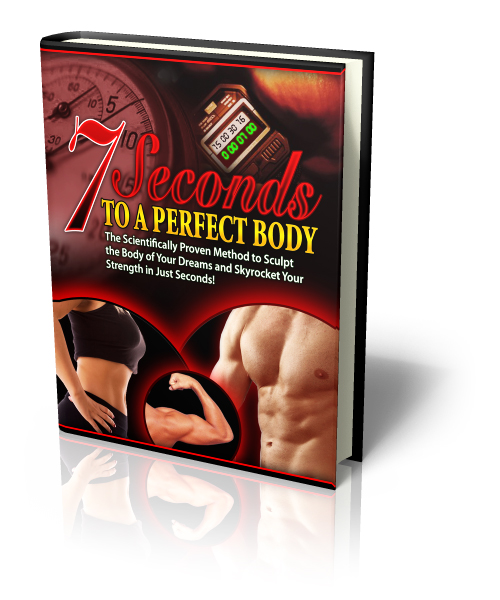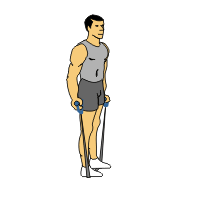Resistance Band Exercises
Learning Stillness Through Movement
By Paul "Batman" O'Brien
B.A., N.C.E.H.S., Dip. Acu., Cert Clin. IMed., Dip. Adv. OBB, Dip. CHM, Pn1, PN-SSR, PN-NCA, M.AFPA., M.C.Th.A.
Resistance Band Exercises aren't a favourite workout method of mine. They're inefficient, there's an element of unneeded expense and they don't produce great results for the time spent training with them. That said resistance bands, or exercise bands are one of my favourite tools for training. And in this article I'm going to share with you some crucial tips to take for these types of exercise...first though...let's get the basics out of the way...
What are Resistance Bands?
Simply put they are long sheets - often about 1-3 foot in length about about 4-6 inches wide or a think light rubber. These bands come in different tensile strengths, meaning some are harder to stretch than other. Depending on the level and make of the band Blue is often the easiest to stretch and offers the least resistance. Red is about a medium and Black is the hardest to stretch and offers the greatest resistance.
IMPORTANT TRAINERS TIP

If you need a detailed training guide (and believe me when you see the results of your Isometric Workout you'll want one) I've written a comprehensive guide to Isometrics called 7 Seconds to A Perfect Body. It's over 250 pages long, with hundred of step by step images to help you get your angles correct and even step by step work along video guides. You can check it out here.
Okay, then what are Resistance Band Exercises?
Resistance Band Exercises are often found as a 'new' gym class or frequently prescribed by physiotherapists for patient rehab say after a should injury. Essentially the band is either tied to something, stood on or held by hand. To use it one pushes or pulls against it. The tensile strength of the band provides resistance and load to the muscles. You move the muscle through a given and often full range of motion and the idea is that it makes your muscles stronger, like lifting weights etc.
For example let's say you are holding one end of a medium level band in each hand. You can then step on the band in the centre, creating a 'V' shape with the band, feet pinning the middle of the band to the ground, with each hand, down by your sides holding one of the band. From this position you can do a whole lot....for example...a...
Resistance Band Alternating Biceps Curl

- Stand with your feet shoulder width apart, your knees slightly bent, and at a staggered stance.
- Step onto middle of tubing with back foot or both feet.
- Grasp the ends with an underhand grip (palms facing forward) with arms hanging down at sides.
- Your elbows should be close to your sides.
- Flex at the elbows and curl the band up to approximately shoulder level.
- Keep your elbows close to sides throughout the movement.
- Return to start position.
- Remember to keep your back and head straight and in a neutral position throughout movement.
- Your shoulders should be stabilized by squeezing your shoulder blades together slightly - only the elbow joint should be moving.
To perform a front shoulder raise bring your hands to your thighs, knuckles facing upwards and keeping the arms straight out in front of you simply bring the arms up and level with the shoulders...
You can then easily transition into a lateral raise, shoulder press, triceps kickback, row etc.
See how easy it is to perform resistance band exercises?
If it's So Easy What's Your Problem Then?
Well, that's kind of the problem - it's too easy. By this I mean there's a problem with the actual resistance.
In nearly all resistance band exercises they take the muscle through a full range of motion. That means they are sub maximal muscle contractions and that means they won't produce enough stimulus for real growth. That also means multiple repetitions and if you read the other articles on this site then you know by now that...
REPS ARE A WASTE OF TIME
So what are they good for then?
The best thing about resistance band exercises is precisely what I said at the very start of this article - they are a great TOOL! But tool for what?
Properly used a resistance band can teach you which muscle are used in a given movement. Many people aren't that familiar with how the body actually works. Using a resistance band you can - if you pay attention - feel which muscles are used in a given movement.
Using a light resistance band, slowly take the muscle through the range of motion it moves through. This provide resistance, not enough to work the muscle but enough to train a particular muscles engagement. Doing this a few times over the week will help you identify the muscle being used and allow you to isolate that contraction. Once you can do that THEN you can do some really cool work and get into ISOMETRICS!!!
If you really want to release your full potential and enjoy the natural buzz exercise brings you should consider training with my Perfect Body method - it's the most comprehensive Isometric Training Program available.
Check it out here - 7 Seconds to A Perfect Body
or










New! Comments
Have your say about what you just read! Leave me a comment in the box below.